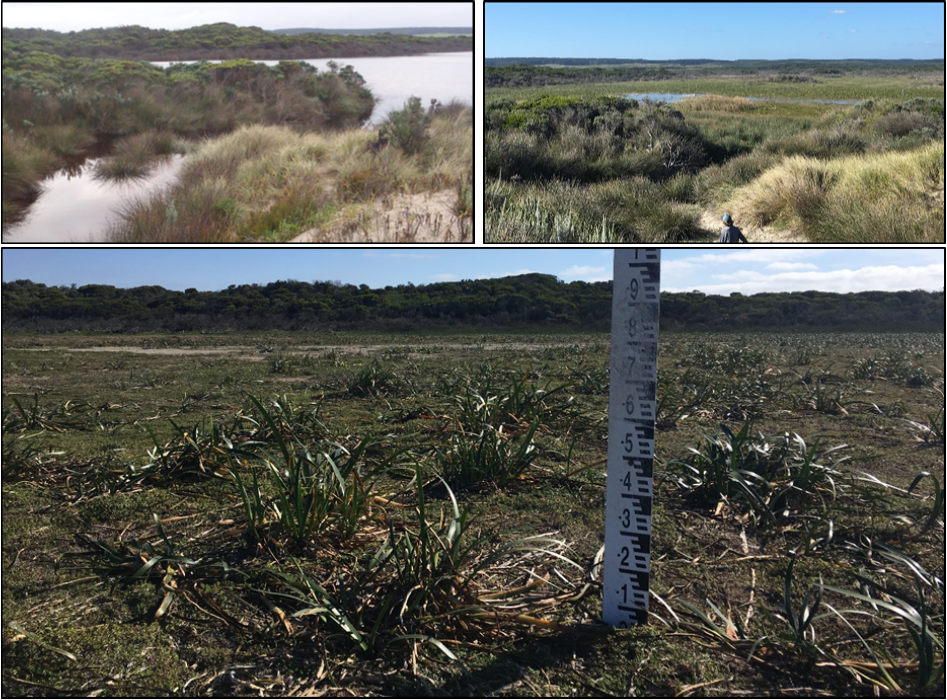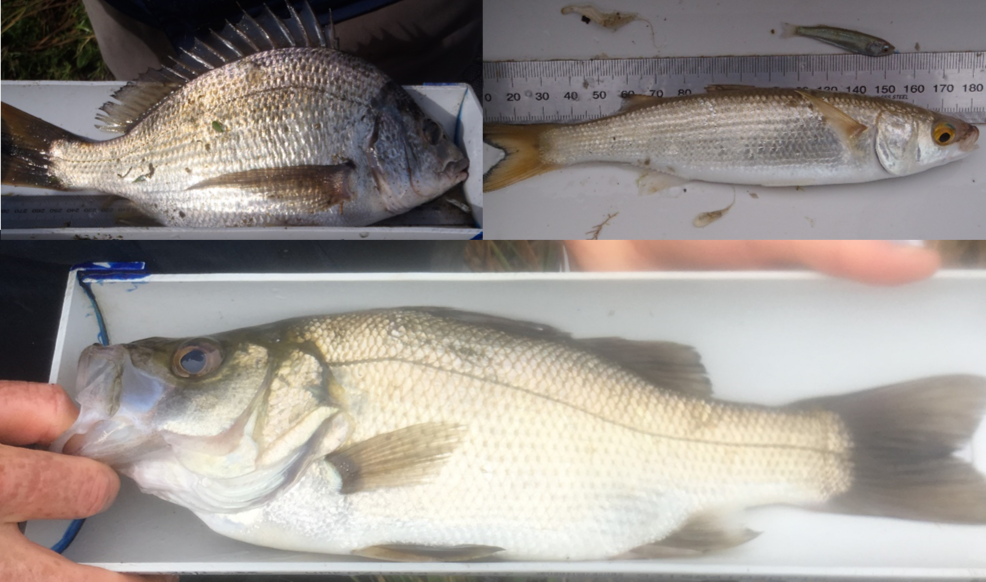Long Swamp fish monitoring update
Back in April, we completed another round of fish monitoring in Long Swamp and the lower Glenelg River. Following the next round of monitoring in spring this year, we will have five years of seasonal data for the system, which is quite rare for ecological communities. The five years of data represents periods before (2014), during (2015) and after (2016-18) the restoration trial at Nobles Rocks. Before we get into the results, thanks to the Glenelg Hopkins CMA and the Victorian Government for their on-going funding and support for the restoration trial and associated ecological monitoring.
Sampling in autumn this year revealed lower than average water levels at some sites, which was perhaps not surprising, given the extended extremely warm and dry conditions over the spring, summer and early autumn. The site near ‘Ewings property’ had to be revisited in late May, following a decent rainfall event and slight increases in water level (which allowed us to float our canoe!). White Sands, the other artificial outlet which naturally closed over during the drought, was also dry and therefore could not be sampled. This is not uncommon for White Sands, which presumably relies more on surface flows than groundwater.

White Sands in autumn 2016 (top left) and autumn 2017 (top right), showing the decline in aquatic habitat availability due to rainfall patterns, and in autumn 2018 when the site was dry.
Overall, a total 23 native fish species were recorded during autumn, including the nationally vulnerable Little Galaxias (Galaxiella toourtkoourt) and Yarra Pygmy Perch (Nannoperca obscura). The generalist Smallmouth Hardyhead (Atherinosoma microstoma) was the most abundant, followed by the introduced Eastern Gambusia (Gambusia holbrooki). Despite the dominance of Eastern Gambusia, numbers of Southern Pygmy Perch and Yarra Pygmy Perch were almost the highest on record near Ewing’s property, with both species also showing reasonable recruitment. Lake Momboeng is still the only region in Long Swamp that remains free of this invasive species.

Assorted catch from Ewings property- Yarra Pygmy Perch, Southern Pygmy Perch and the introduced Eastern Gambusia.
Nobles Rocks is still supporting low numbers of Yarra Pygmy Perch, suggesting that it may take some time before the population really takes hold at the site. Small numbers of Little Galaxias are also being detected at Nobles Rocks, while a single individual was recorded near Ewing’s property, confirming the species is still persisting.
Diadromous species, those that migrate between freshwater and marine water to breed, continue to be valuable indicators for assessing connectivity throughout Long Swamp, both in response to restoration works and annual climatic variability. For example, Common Galaxias (Galaxias maculatus) has become progressively more abundant at Nobles Rocks since the restoration and thus closure of the outlet, suggesting more individuals are now migrating upstream from the estuary as a result of increased connectivity. Another diadromous fish, Tupong (Pseudaphritis urvillii), was detected at Nobles Rocks (albeit one individual), further highlighting the effects of improved connectivity through the system.

The single Tupong (top) and single Little Galaxias (bottom) that were each recorded at Ewings property.
Down in the estuary, Yelloweye Mullet (Aldrichetta forsteri) were very abundant, while numbers of Black Bream (Acanthopagrus butcheri) were considerably lower compared to previous years (specifically 2015 and 2016). Tupong (mainly juveniles) were ten times more abundant in autumn 2018 compared to other years, which can be attributed to higher flows in 2016 but also broader management changes in the Glenelg River (e.g. reduced fish barriers).

Common estuarine that were caught in the lower Glenelg River and Oxbow Lake, from top left: Black Bream, Yelloweye Mullet and Estuary Perch.
Here’s hoping we see some decent rainfall in the coming months to ensure flows continue into late spring. Thanks to Cory Young, Nicole Mojonnier, Lu-Wei Spinks and Sheryl Holliday for their help with fish sampling this autumn!
